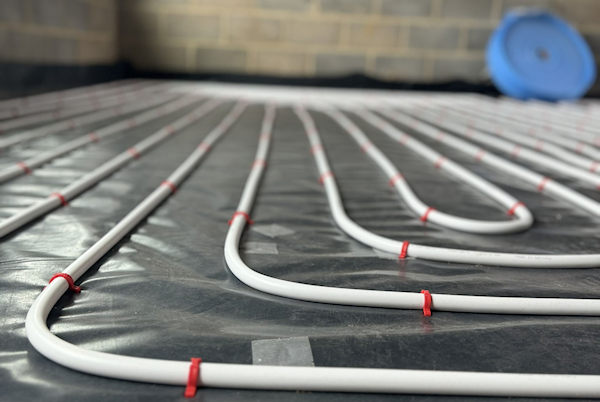
MLCP – Coils Vs. Straight Lengths
Flexible MLCP
Piping made from multilayer composite pipe is a viable alternative to copper because it offers flexibility, speed of installation and the elimination of hot works on site.
First introduced in the UK in the 1970s, MLCP has seen growth in popularity alongside the increased use of renewable energy technology – such as underfloor heating. MLCP has also seen less dramatic price fluctuations in recent years compared with copper and steel.
The flexibility of the pipe, together with the use of press fittings, is where MLCP can offer significant savings to plumbers on installation time. The pipe can be bent readily, allowing efficient routing around the building. Once bent, it retains its form and stays in position. As Multipipe MLCP has an aluminium mid-layer, it meets the NHBC requirements in detecting buried services, so there is no need to worry about finding it in walls.
In this Tech Tuesday post, we look at where coils and straight length should be used and the benefits of each, so you know what is best for your project.
Straight Length MLCP
Straight sticks for pipes have been around the longest, and having talked to our customers; it seems that it is the preferred choice. Why? Well, copper and steel tube is only available in straight lengths. As the only installation method for years, it’s like a comfort blanket, and often installers tend to stick with what they know.
There is also the other point, neatness. When you look at a spaghetti of coiled pipe, it is enough to put you off. A nicely clipped pipe with its ruler-straight lines is enough to keep even the most critical OCD plumber happy. Therefore, straight length is great for when pipes are on show. Rest assured, Multipipe MLCP comes in straight lengths for those projects that demand it.
Coiled MLCP
A coiled pipe is usually reserved for underfloor heating systems. However, when running circuits for radiators or hot and cold pipes under a floor, a coiled pipe is a great option. You can thread Multipipe MLCP through joists and limit the number of joints under the floor! Our previous article https://www.multipipe.co.uk/do-you-install-your-hot-and-cold-pipes-in-floors/ demonstrated how this is a requirement of hot and cold services.
Benefits of Coiled MLCP
The coiled pipe has less aluminium than its straight counterpart, which means it is more flexible than straight sticks. As there is less aluminium in coils, the cost per meter is less, making financial sense to use coiled MLCP where possible.
Another market sector where MLCP is particularly suited is high-rise residential projects, where it is being used in risers and downstream in corridors and apartments. The flexibility of coils over straight bars means installation times are generally 30-40% quicker than when using traditional copper or steel.
For projects where you want to reduce the number of fittings, coiled MLCP is an ideal choice.
Also, the risk of theft is minimal because MLCP has no scrap value. So next time you are using pipes for fit-out, consider if coils are a better option.
What are the limits of Coiled MLCP?
Coils are only produced up to 32mm, and beyond that, the product would not coil well. MLCP has a metal base meaning that it is stiffer than a standard plastic pipe; therefore cabling 32mm pipework might be quite difficult. However, it is far less prone to expansion noises than standard plastic, thanks to the lower expansion rates.
Did you know?
Not all Multilayer pipe systems are WRAS Approved – Please check before purchase or buy Multipipe with confidence knowing that our product is WRAS approved. This brings the added benefit of being able to use your UFH project offcuts for all your water plumbing needs – good for your wallet and the environment!





